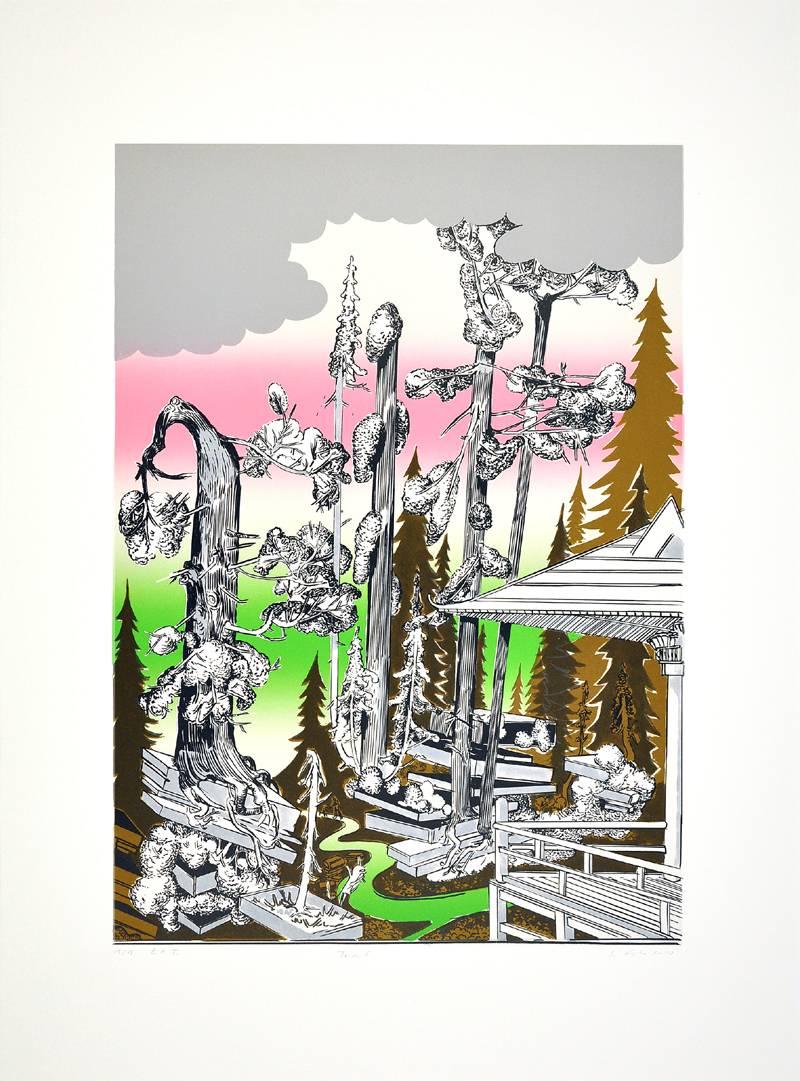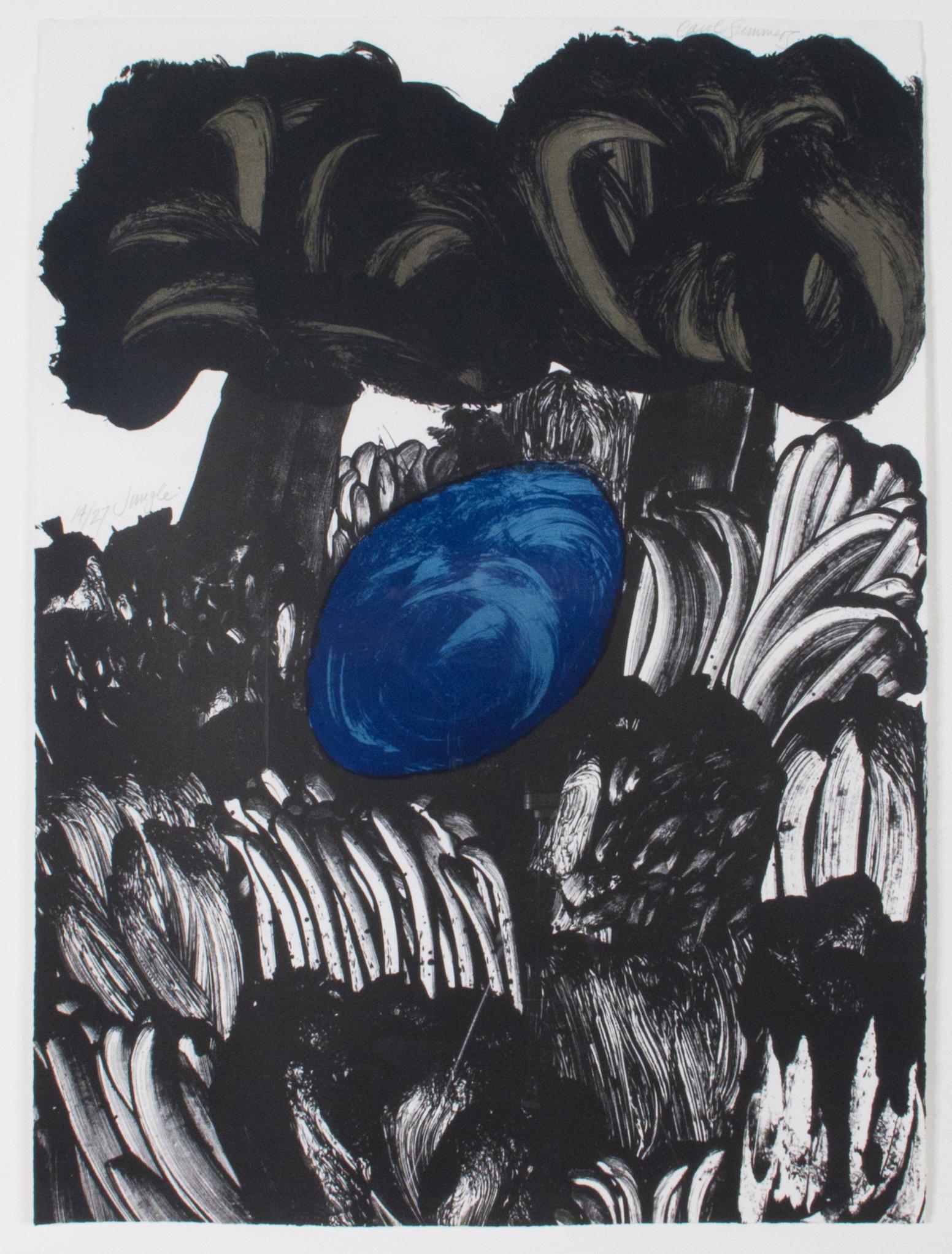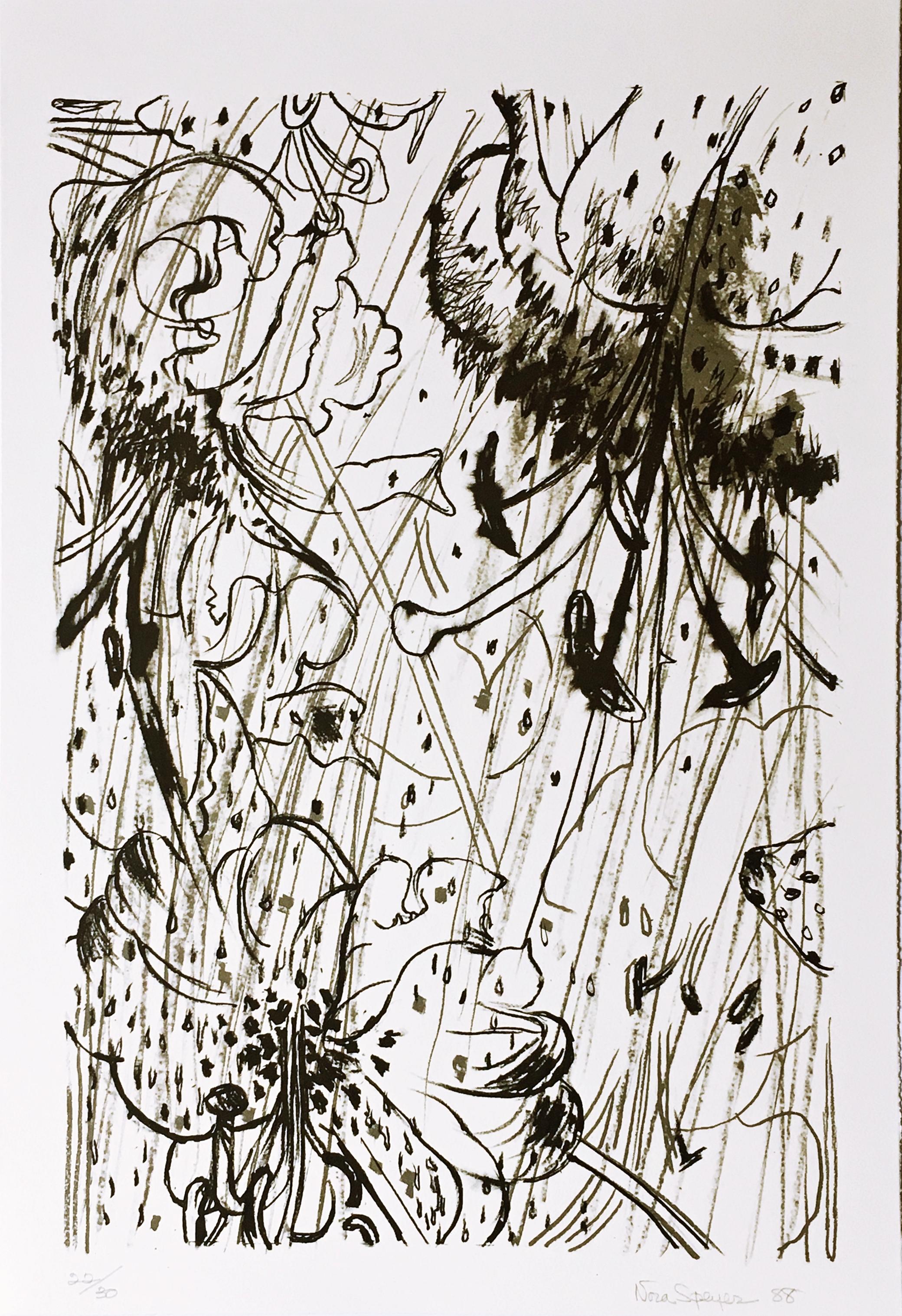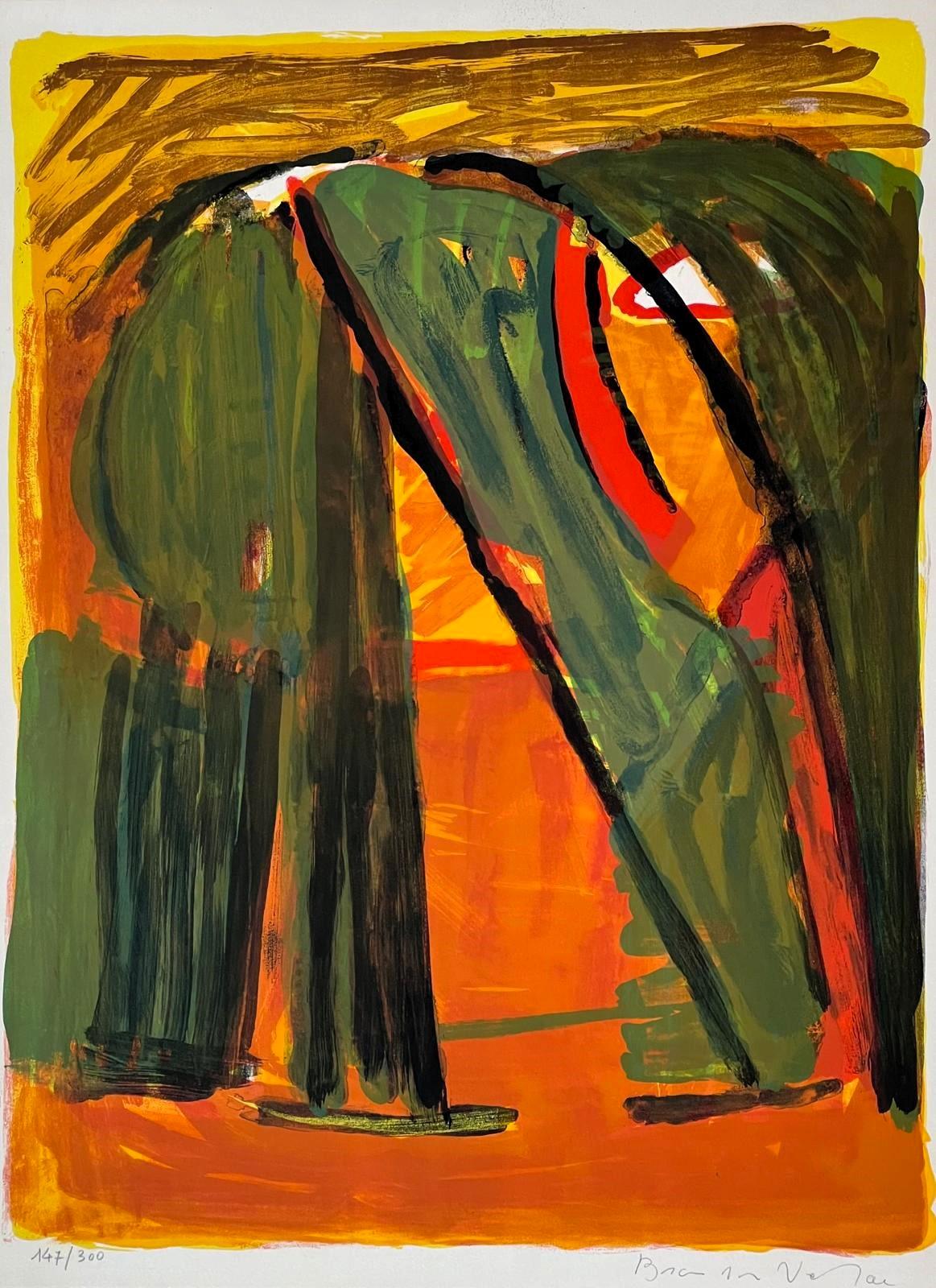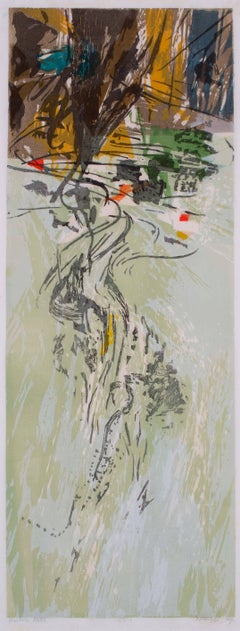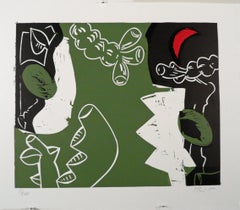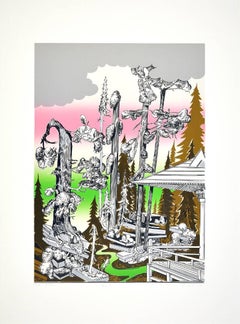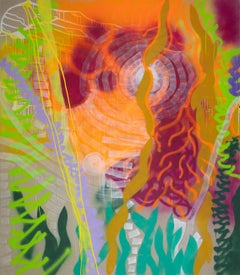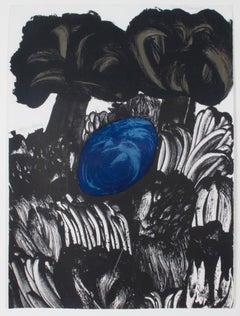Items Similar to OVERGROWN PATH
Want more images or videos?
Request additional images or videos from the seller
1 of 5
Karl SchragOVERGROWN PATH
$6,000
£4,650.45
€5,265.42
CA$8,588.50
A$9,364.96
CHF 4,867.43
MX$112,111.06
NOK 61,738.56
SEK 57,829.72
DKK 39,325.90
About the Item
Schrag, Karl (American, born Germany, 1912-1995).. OVERGROWN PATH. Color lithograph, not dated. Edition of 30. Signed and numbered 21/30 in pencil. 36 1/2 x 22 1/4 inches (sheet). Framed to x 45 1/2 x 31 3/8 inches. Provenance, Gallery Sixty-Eight, 1991; Private Collection, Falmouth, ME. In excellent condition with very fresh, bright colors.
- Creator:Karl Schrag (1912-1995, American)
- Dimensions:Height: 46 in (116.84 cm)Width: 32 in (81.28 cm)Depth: 2 in (5.08 cm)
- Medium:
- Period:
- Condition:
- Gallery Location:Portland, ME
- Reference Number:Seller: 134641stDibs: LU36738281712
About the Seller
5.0
Recognized Seller
These prestigious sellers are industry leaders and represent the highest echelon for item quality and design.
Platinum Seller
Premium sellers with a 4.7+ rating and 24-hour response times
Established in 1966
1stDibs seller since 2016
358 sales on 1stDibs
Typical response time: 1 hour
Associations
International Fine Print Dealers Association
- ShippingRetrieving quote...Shipping from: Portland, ME
- Return Policy
More From This Seller
View AllWINTER'S PATH
By Seong Moy
Located in Portland, ME
Moy, Seong (American, born China, 1921-2013). WINTER'S PATH. Color woodcut, 1965. Edition of 210 published by IGAS (International Graphic Arts Society). Signed, numbered 188/210, and...
Category
1960s Prints and Multiples
Materials
Woodcut
$1,200 Sale Price
20% Off
UNTITLED
By Charlie Hewitt
Located in Portland, ME
Hewitt, Charlie. UNTITLED COMPOSITION. Woodcut, not dated, but circa 1995. Edition of 100. Signed and numbered in pencil. 16 x 20 inches. In excellent condition.
Category
Late 20th Century Abstract Prints
UNTITLED
By Morris Shulman
Located in Portland, ME
Shulman, Morris (American, 1912-1978). UNTITLED. Casein on paper, circa 1951. Signed, lower left. 14 1/2 x 21 3/4 inches, framed to 23 x 30 inches. In excellent condition.
Shulman st...
Category
1950s Abstract Paintings
Materials
Casein
FOREST IN THE SPRING
By Jacques Hnizdovsky
Located in Portland, ME
Hnizdovsky, Jacques. FOREST IN THE SPRING. T.31 Woodcut, 1960. Edition of 100. Signed, Titled, dated, numbered 10/100 and inscribed "Woodcut," all in pencil. 39 x 9 inches (sheet). I...
Category
1960s Landscape Prints
Materials
Woodcut
FIGURE NO. 1
By Louis Schanker
Located in Portland, ME
Schanker, Louis (American 1903-1981). FIGURE NO.1. Johnson 99. Wood etching in colors, 1949. Edition of 6. Titled and signed in pencil. 25 1/2 X 13 3/8 inches (image). Framed to 33...
Category
1940s Figurative Prints
Materials
Woodcut
AU FOND
By Richard Royce
Located in Portland, ME
Royce, Richard (American, born 1941). AU FOND. Intagio print in colors, 1967. Edition of 40. printed on BFK Rives paper. Titled, numbered 6/40, and signed and dated, all in pencil. 1...
Category
1960s Abstract Prints
Materials
Intaglio
You May Also Like
Wild Path, Signed Screenprint by Ronald Julius Christensen
By Ronald Julius Christensen
Located in Long Island City, NY
Wild Path by Ronald Julius Christensen, American (1923–1999)
Date: circa 1980
Screenprint, signed and numbered in pencil
Edition of 295
Size: 30 in. x 22.5 in. (76.2 cm x 57.15 cm)
Category
1980s Modern Landscape Prints
Materials
Screen
Trail
By Susanne Kühn
Located in Lyons, CO
Color lithograph, Edition 20.
Susanne Kühn’s lithographs focus on an exploration of the concept of landscape drawing. Kühn imagines landscape as a threshold between nature and urbanism. The drawings and lithographs range from the depiction of architectural elements to seemingly more traditional landscape renderings.
Kühn often reconstructs compositions derived from Northern Renaissance etchings...
Category
2010s Contemporary More Prints
Materials
Lithograph
$1,500
Walking the Path in Wonder, bright, multicolored, large abstracted landscape
By Rachelle Krieger
Located in New York, NY
The artist activates her landscapes with sensuous applications of pigment. She layers bold hues and constructs rhizomatic forms—then interrupted by intuitive streaks of spray paint. ...
Category
2010s Contemporary Abstract Paintings
Materials
Linen, Spray Paint, Acrylic
"Jungle, " Color Lithograph Landscape signed by Carol Summers
By Carol Summers
Located in Milwaukee, WI
"Jungle" is an important, rare color lithograph signed by Carol Summers from the early years of his production. The image offers a landscape of a dark jungle, printed mostly in black ink. In the center, a blue pool of water is shaded by two trees. Summers' technique in this print renders a painterly quality to the image: the grasses and leaves of the scene are all created with playful, energetic swiping motions much like watercolor paint. This technique and the use of fields of color predict the style Summers would adopt in the coming decades, making this an important early work.
30 x 22 inches, artwork
Numbered 14 of the edition of 27
Carol Summers (1925-2016) has worked as an artist throughout the second half of the 20th century and into the first years of the next, outliving most of his mid-century modernist peers. Initially trained as a painter, Summers was drawn to color woodcuts around 1950 and it became his specialty thereafter. Over the years he has developed a process and style that is both innovative and readily recognizable. His art is known for it’s large scale, saturated fields of bold color, semi-abstract treatment of landscapes from around the world and a luminescent quality achieved through a printmaking process he invented.
In a career that has extended over half a century, Summers has hand-pulled approximately 245 woodcuts in editions that have typically run from 25 to 100 in number. His talent was both inherited and learned. Born in 1925 in Kingston, a small town in upstate New York, Summers was raised in nearby Woodstock with his older sister, Mary. His parents were both artists who had met in art school in St. Louis. During the Great Depression, when Carol was growing up, his father supported the family as a medical illustrator until he could return to painting. His mother was a watercolorist and also quite knowledgeable about the different kinds of papers used for various kinds of painting. Many years later, Summers would paint or print on thinly textured paper originally collected by his mother.
From 1948 to 1951, Carol Summers trained in the classical fine and studio arts at Bard College and at the Art Students League of New York. He studied painting with Steven Hirsh and printmaking with Louis Schanker. He admired the shapes and colors favored by early modernists Paul Klee (Sw: 1879-1940) and Matt Phillips (Am: b.1927- ). After graduating, Summers quit working as a part-time carpenter and cabinetmaker (which had supported his schooling and living expenses) to focus fulltime on art. That same year, an early abstract, Bridge No. 1 was selected for a Purchase Prize in a competition sponsored by the Brooklyn Museum.
In 1952, his work (Cathedral, Construction and Icarus) was shown the first time at the Museum of Modern Art in New York City in an exhibition of American woodcuts. In 1954, Summers received a grant from the Italian government to study for a year in Italy. Woodcuts completed soon after his arrival there were almost all editions of only 8 to 25 prints, small in size, architectural in content and black and white in color. The most well-known are Siennese Landscape and Little Landscape, which depicted the area near where he resided. Summers extended this trip three more years, a decision which would have significant impact on choices of subject matter and color in the coming decade.
After returning from Europe, Summers’ images continued to feature historical landmarks and events from Italy as well as from France, Spain and Greece. However, as evidenced in Aetna’s Dream, Worldwind and Arch of Triumph, a new look prevailed. These woodcuts were larger in size and in color. Some incorporated metal leaf in the creation of a collage and Summers even experimented with silkscreening. Editions were now between 20 and 50 prints in number. Most importantly, Summers employed his rubbing technique for the first time in the creation of Fantastic Garden in late 1957.
Dark Vision of Xerxes, a benchmark for Summers, was the first woodcut where Summers experimented using mineral spirits as part of his printmaking process. A Fulbright Grant as well as Fellowships from the Louis Comfort Tiffany Foundation and the Guggenheim Foundation followed soon thereafter, as did faculty positions at colleges and universities primarily in New York and Pennsylvania. During this period he married a dancer named Elaine Smithers with whom he had one son, Kyle. Around this same time, along with fellow artist Leonard Baskin, Summers pioneered what is now referred to as the “monumental” woodcut. This term was coined in the early 1960s to denote woodcuts that were dramatically bigger than those previously created in earlier years, ones that were limited in size mostly by the size of small hand-presses. While Baskin chose figurative subject matter, serious in nature and rendered with thick, striated lines, Summers rendered much less somber images preferring to emphasize shape and color; his subject matter approached abstraction but was always firmly rooted in the landscape.
In addition to working in this new, larger scale, Summers simultaneously refined a printmaking process which would eventually be called the “Carol Summers Method” or the “ Carol Summers Technique”. Summers produces his woodcuts by hand, usually from one or more blocks of quarter-inch pine, using oil-based printing inks and porous mulberry papers. His woodcuts reveal a sensitivity to wood especially its absorptive qualities and the subtleties of the grain. In several of his woodcuts throughout his career he has used the undulating, grainy patterns of a large wood plank to portray a flowing river or tumbling waterfall. The best examples of this are Dream, done in 1965 and the later Flash Flood Escalante, in 2003. In the majority of his woodcuts, Summers makes the blocks slightly larger than the paper so the image and color will bleed off the edge.
Before printing, he centers a dry sheet of paper over the top of the cut wood block or blocks, securing it with giant clips. Then he rolls the ink directly on the front of the sheet of paper and pressing down onto the dry wood block or reassembled group of blocks. Summers is technically very proficient; the inks are thoroughly saturated onto the surface of the paper but they do not run into each other. The precision of the color inking in Constantine’s Dream in 1969 and Rainbow Glacier in 1970 has been referred to in various studio handbooks. Summers refers to his own printing technique as “rubbing”. In traditional woodcut printing, including the Japanese method, the ink is applied directly onto the block. However, by following his own method, Summers has avoided the mirror-reversed image of a conventional print and it has given him the control over the precise amount of ink that he wants on the paper. After the ink is applied to the front of the paper, Summers sprays it with mineral spirits, which act as a thinning agent. The absorptive fibers of the paper draw the thinned ink away from the surface softening the shapes and diffusing and muting the colors. This produces a unique glow that is a hallmark of the Summers printmaking technique. Unlike the works of other color field artists or modernists of the time, this new technique made Summers’ extreme simplification and flat color areas anything but hard-edged or coldly impersonal.
By the 1960s, Summers had developed a personal way of coloring and printing and was not afraid of hard work, doing the cutting, inking and pulling himself. In 1964, at the age of 38, Summers’ work was exhibited for a second time at the Museum of Modern Art. This time his work was featured in a one-man show and then as one of MOMA’s two-year traveling exhibitions which toured throughout the United States. In subsequent years, Summers’ works would be exhibited and acquired for the permanent collections of multiple museums throughout the United States, Europe and Asia. Summers’ familiarity with landscapes throughout the world is firsthand. As a navigator-bombardier in the Marines in World War II, he toured the South Pacific and Asia.
Following college, travel in Europe and subsequent teaching positions, in 1972, after 47 years on the East Coast, Carol Summers moved permanently to Bonny Doon in the Santa Cruz Mountains in Northern California. There met his second wife, Joan Ward Toth, a textile artist who died in 1998; and it was here his second son, Ethan was born. During the years that followed this relocation, Summers’ choice of subject matter became more diverse although it retained the positive, mostly life-affirming quality that had existed from the beginning. Images now included moons, comets, both sunny and starry skies, hearts and flowers, all of which, in one way or another, remained tied to the landscape.
In the 1980s, from his home and studio in the Santa Cruz mountains, Summers continued to work as an artist supplementing his income by conducting classes and workshops at universities in California and Oregon as well as throughout the Mid and Southwest. He also traveled extensively during this period hiking and camping, often for weeks at a time, throughout the western United States and Canada. Throughout the decade it was not unusual for Summers to backpack alone or with a fellow artist into mountains or back country for six weeks or more at a time. Not surprisingly, the artwork created during this period rarely departed from images of the land, sea and sky. Summers rendered these landscapes in a more representational style than before, however he always kept them somewhat abstract by mixing geometric shapes with organic shapes, irregular in outline. Some of his most critically acknowledged work was created during this period including First Rain, 1985 and The Rolling Sea, 1989. Summers received an honorary doctorate from his alma mater, Bard College in 1979 and was selected by the United States Information Agency to spend a year conducting painting and printmaking workshops at universities throughout India. Since that original sabbatical, he has returned every year, spending four to eight weeks traveling throughout that country.
In the 1990s, interspersed with these journeys to India have been additional treks to the back roads and high country areas of Mexico, Central America, Nepal, China and Japan. Travel to these exotic and faraway places had a profound influence on Summers’ art. Subject matter became more worldly and nonwestern as with From Humla to Dolpo, 1991 or A Former Life of Budha, 1996, for example. Architectural images, such as The Pillars of Hercules, 1990 or The Raja’s Aviary, 1992 became more common. Still life images made a reappearance with Jungle Bouquet in 1997. This was also a period when Summers began using odd-sized paper to further the impact of an image.
The 1996 Night, a view of the earth and horizon as it might be seen by an astronaut, is over six feet long and only slightly more than a foot-and-a-half high. From 1999, Revuelta A Vida (Spanish for “Return to Life”) is pie-shaped and covers nearly 18 cubic feet. It was also at this juncture that Summers began to experiment with a somewhat different palette although he retained his love of saturated colors. The 2003 Far Side of Time is a superb example of the new direction taken by this colorist.
At the turn of the millennium in 1999, “Carol Summers Woodcuts...
Category
1960s Contemporary Landscape Prints
Materials
Lithograph
Untitled, from the Long Point Gallery Portfolio
Located in New York, NY
Nora Speyer
Untitled, from the Long Point Gallery Portfolio, 1988
Lithograph on paper with deckled edges
Hand signed, numbered 22/30 and dated on lower front
22 × 15 inches
Unframed
Hand signed, numbered 22/30 and dated on lower front
Publisher: Long Point Gallery, Inc., Provincetown, Massachusetts; Printer: Bruce Porter from Trestle Editions Limited, New York
Rarely to market, this stunning 1988 woodcut was created by Nora Speyer as part of a portfolio produced for sale by Long Point Gallery, an artist's cooperative in Provincetown, Massachusetts.
Superb provenance as it is was acquired from the original Long Point Portfolio. This will be the first time the work will be removed from the portfolio.
It is hand signed and numbered from a very small edition of only 30; it is in fine condition, unframed and never framed, and housed in the original portfolio box, with the original colophon page, which also included works by 11 other artists.
For reference and provenance we have included an image of the colophon page from the complete portfolio.
About Nora Speyer:
The most exciting place to me is where I can communicate with the greatest number of artists. I can't live without some artists around. I'm not saying artists are likable. They can be very objectionable, but they are still my world.
Nora Speyer
Born in Pittsburgh, Speyer enrolled at Temple University's Tyler School of Art when she was sixteen. It was there she became roommates with Lillian Lent...
Category
1980s Abstract Abstract Prints
Materials
Pencil, Lithograph
Forest
By Bram Van Velde
Located in Paris, FR
Lithograph, 1970
Handsigned by the artist in pencil and numbered 147/300
Publisher : Jacques Putman - Editions Prisunic
Printer : Pierre Badey (Paris)
Catalog : [Mason Putman 61, p. ...
Category
1970s Abstract Abstract Prints
Materials
Lithograph
